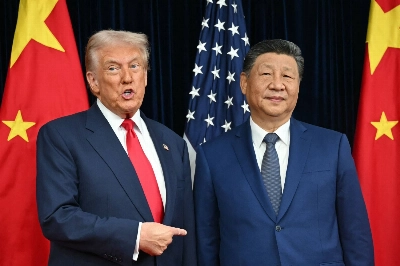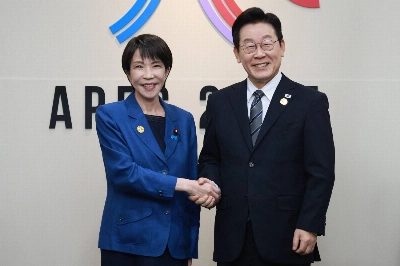A
In his lifetime, artist Ding Yanyong was called both the "Oriental Matisse" and the "Modern Bada Shanren," after the Chinese individualist painter born Zhu Da (1629-1705). The combination of the epithets obviously reflects Ding's (1902-78) ability to straddle the East and West, but given a little historical distance, Matisse and Bada feel much like boundaries that circumscribe the artist. Hence, the title of exhibition at the Hong Kong Museum of Art, which marks the 30th anniversary of the artist's passing, "No Frontiers," feels inappropriate.
Cultural transmission in recent centuries has conventionally been understood to have predominantly gone one way, West to East; "No Frontiers," however, suggests that Western Modernism is actually analogous to Chinese artistic traditions — and, to take things to a whole other confusing level, that this became recognized in the 20th century due to Japanese Modernism.
Encouraged by an uncle who graduated from the Faculty of Agriculture at the Imperial University in Tokyo, Ding left his home of Guangdong for Japan in 1920. He first enrolled in the Kawabata Painting School headed by Fujishima Takeji (1867-1943) — a romantic painter who turned to Ultranationalist Realism in the 1930s — before switching to the Tokyo School of Fine Arts (1921-25), where he took Henri Matisse as his primary artistic model. Ding's stylistic affinity to the French artist throughout his career can be seen in the bold, flat colors and the simplified lines that remained with the Chinese painter long after, as in "Portrait" (1969).
Graduating in 1925, Ding returned to China and promoted Western painting in Shanghai at the newly established Lida School. Ding's colleagues had studied in Japan where, in the 1920s, a reconceptualization of imported Western painting methods was under way. In 1922, Nakai Sotaro had published "An Outline of Modern Art," in which he examined how Western artists such as Paul Cezanne and Vincent van Gogh, shared a similar dislike of commercialism with the Chinese literati painters.
Another colleague at Lida, Feng Zikai (1898-1975) also argued that the individual subjectivity of modern Western art and Chinese painting traditions were intertwined. Ding confirm the sentiment when he noted in a diary that Chinese "painting philosophy is one and the same with modern Western art except that China has preceded the West by 700 years."
In this sense, Western art was essentially a latecomer that merely confirmed the rightness of an approach that already existed in premodern Chinese painting. Yet it was this new Western art that revitalized "Chinese" painting, even if working in the "Western" style was a relatively short-lived phenomenon in China.
From 1929, Ding began collecting works by Bada and the monk and painter Shitao (1642-1707), both painters who broke with Ming dynasty realism and developed virtuosic, imaginative ink paintings that refused imitation and asserted selfhood. Although stylistically remote, one can see Shitao's principle of "the primordial stroke" in the undated "Painting in Painting," in which an easel in the picture depicts a cat in Ding's signature "single-stroke" style.
From 1973, Western traces in his art disappeared further, and the international acclaim he received for more thoroughly Chinese works like "Lotus and Mandarin Ducks" (1975) overshadowed his initial bent for Western Expressionism.
Ding was certainly a lesser master than the two artists he gets named for. But his course through Western art clarified his understanding of his own country's traditions, which freed his art from the repertory of conventional forms in the moribund literati tradition in 20th-century China, and extricated it from lifeless imitation of Western styles.
Ding noted early on that "no one would ever take notice of a Chinese artist who makes Western art," and his Western-style works do appear to be simply a prelude to the humorous and caricature-like Chinese ink paintings that characterized Ding's late career.
"No Frontiers: The Art of Ding Yanyong" is showing till April 5 at the Hong Kong Museum of Art. For more information, visit www.lcsd.gov.hk

















With your current subscription plan you can comment on stories. However, before writing your first comment, please create a display name in the Profile section of your subscriber account page.